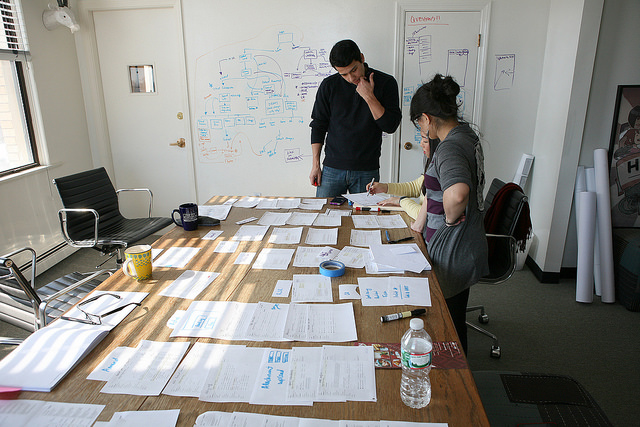In the beginning, there were engineers making software.
Just as there were inventors who came up with the idea and “just made the thing” for centuries before there were industrial designers, so are the origins of software punctuated by programmers who made ugly and inefficient things. But, those “things” were novel, and they worked. Design, as a separate priority, came later. Apple Computer, Inc. became an immediate and substantial hit because they looked beyond what the computer could do and focused on making the hardware accessible and how the software was presented. The focus on color graphics and remarkably usable software (for the time), such as the groundbreaking VisiCalc, gave design a front-and-center priority it hadn’t enjoyed before.
Apple’s pioneering emphasis on the user experience, although it was not called that at the time, birthed a variety of other efforts. “Human-computer interaction” (HCI) emerged as the early discipline that focused on user experience issues, particularly as part of the Association of Computing Machinery (ACM). One of the early proponents of software design as an explicit consideration was Paul Heckel. The Silicon Valley veteran and luminary of the software patent community wrote “The Elements of Friendly Software Design” in 1984. While the examples are outdated, the principles remain crisp even 30 years later. The 1980s and early 1990s were thus the early days of user experience, before the term itself had taken primacy and as smart pioneers like Jobs, Heckel, and people like Brenda Laurel were doing their thing.
This period in user experience history was about intuition. There were not yet principles and practices nor was the term itself even recognized. There were a lot of people trying to figure things out for themselves. Good ideas competed with bad ones, and it was only over time that the correct ideas and approaches solidified. In contemporary terms it would be like relying on the founder or engineer to provide the user experience themselves, without a single designer (at a minimum) or a larger user experience effort. This can work if the founder or engineer has good instincts for aesthetics. Or if they really focus on user experience despite lacking skills or training. Or they get lucky.
Today, more than ever, it is increasingly likely that such an instinctual approach will prove adequate. As user experiences have continued to improve—and they have come a remarkably long way over the last decade—we users have developed a better sense of “good” user experience. So whereas the engineer of the 1980s was often “designing” cover-your-eyes-awful stuff, an engineer today with a dead eye for aesthetics will still make something that is at least adequate, if not market-ready. Of course, the flip side of this is also true: users have substantially higher standards for what constitutes a great experience. While “not broken” was once acceptable, today’s users are accustomed to at least “decent” software and, in some product categories, “great” is really just the basic cost of entry. Context certainly matters.
So, when is it appropriate for companies to rely on intuition for the quality of their digital experiences instead of investing in a more formal, focused approach to user experience? When you simply can’t afford it. When you’re a bootstrapped start-up and you just need to get some users in order to get that funding round. It would be better to beg, borrow, or steal for some design help to “pretty it up” if nothing else, but getting an initial proof of concept and some users can be accomplished by making something that works and then putting in hard work on the sales and iteration side. Another acceptable time to eschew formal user experience and just go with your instincts is when you need proof-of-concepts or are otherwise experimenting with new technologies.
These are all situations where you want to go really fast or really cheap. Trade-offs need to be made. Quality will be an eventual priority, but sometimes you just need to go fast. User experience as a more primary focus can wait for when more money is there and the investor expectations reach a level that can only be achieved with something better designed than you are able to create yourself.
Of course, if you can possibly afford user experience, you should make sure you have at least a little. And, in most cases, some degree of user experience won’t make creation slower. Done well, incorporating user experience will speed things up, and getting it involved early gives you the best chance of good results. We’ll talk more about this next week.
